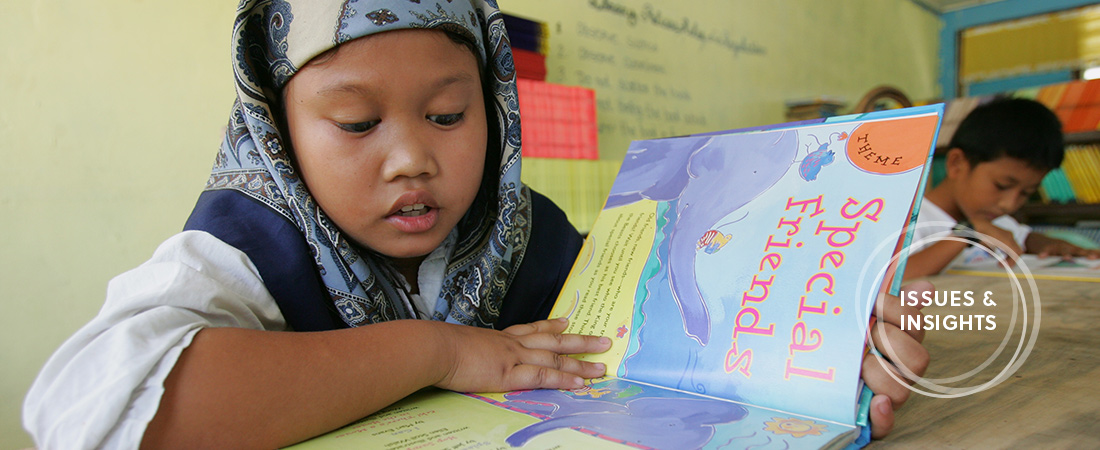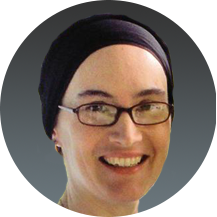Reading Right Now

Improving literacy rates among young people is a key goal for many countries in Africa and Southeast Asia. But throughout these regions, schools often lack the materials, qualified teachers, and operational systems necessary for high-quality literacy instruction.
Using its Read Right Now! approach, EDC has supported literacy development in low-resource contexts for nearly two decades. A new study examines the success Read Right Now! has had in three countries: Senegal, Rwanda, and Philippines. Here, EDC’s Rachel Christina, who coauthored the study, talks about some best practices for literacy instruction in these and other low-resource communities.
Q: What key lessons about teaching literacy did you learn from your recent study?
Christina: First, the more time students spend reading and writing, the more they improve. That’s true both in terms of hours per week and in terms of years of exposure to literacy instruction in a particular language.
Second, how literacy is taught matters. Reading and writing are teachable skills—each can be broken down into smaller sets of skills that can also be explicitly taught. Comprehensive literacy programs need to include oral language, phonics, and authentic writing practice, as these skills are mutually reinforcing.
Third, effective reading programs should help students and teachers develop and use meta-linguistic skills, which enable them to think critically about how they are learning and develop strategies for success across languages. This is particularly critical in communities where multiple languages are spoken or the language of instruction differs from the language that students speak at home.
And finally, programs should embed literacy instruction in a classroom environment that is safe, where mistakes are seen as opportunities to explore and learn, and where biases around gender and ability are countered in instruction and materials.
Q: What are some of the biggest challenges to effective literacy instruction in the countries you studied?
Christina: Lack of resources is a big barrier. Many of the students in the countries where we work attend schools that are overcrowded; often, schools have few books or other teaching resources. Opportunities to actually practice reading and writing—which are critical for literacy development—are limited.
Teacher knowledge is another significant obstacle. School teachers in these communities may be dedicated, but they may not have been fully trained as teachers, and they usually do not know how to teach reading and writing. In some countries where we work, teachers think that students have to learn to read before they can begin to write, which simply isn’t true. Teaching by rote memorization is also common, but it’s not a method that supports literacy. And many teachers do not speak, read, or write the same languages as their students or even have full fluency in the languages that they are expected to teach.
Q: Given these barriers, what does an effective literacy program look like in these places?
Christina: Read Right Now!, like other successful literacy programs, does three essential things: it sets aside dedicated time each day for high-quality reading and writing instruction; it provides adequate teaching and learning materials; and it supports teacher development and the development of education system leadership.
But our research also shows that there are different ways to do this. Take Senegal, where the USAID-funded HYVALL program trained youth volunteers to tutor children who were at risk of failing to learn to read and write. The program emphasized volunteer training, frequent tutoring sessions, and robust communication with families, even when parents could not read or write. At the outset, one quarter of the students could not read a single word in French. Eighteen months later, students were averaging 82 correct words per minute. It proved what we thought we knew—that individualized exposure to high-quality lessons was more powerful than sitting in a class of 100, a common occurrence in Senegal.
The Philippines followed a different model. There, USAID’s Basa Pilipinas program helped provide books and elementary teacher training in formal school settings. And after only one year of the project, significantly more grade 2 students were reading at proficient and advanced levels than before the intervention. It’s worth noting that Basa students spend 90 minutes per day on literacy because schools are trilingual—students are expected to read and write in their mother tongue, Filipino, and English by third grade. We worked hard to bridge the three languages and help students develop strategies to ease the process of moving from one language to another.
Q: What implications does your research have for teacher training?
Christina: The teachers we encounter typically have no training in literacy instruction and may have teaching habits that are at odds with what we know about how children learn to read and write. But our research shows that when you respect teachers as self-motivated individuals who can teach well when provided with training, resources, and materials, you get significant results.
Read Right Now! has four core principles: respect for teachers and learners, routines that make teaching and learning predictable, resources that are rich and engaging, and support for risk-taking. We’re not trying to develop a teacher-proof curriculum. We want teachers to take risks and continue to improve—the same goals that they should have for their own students.
